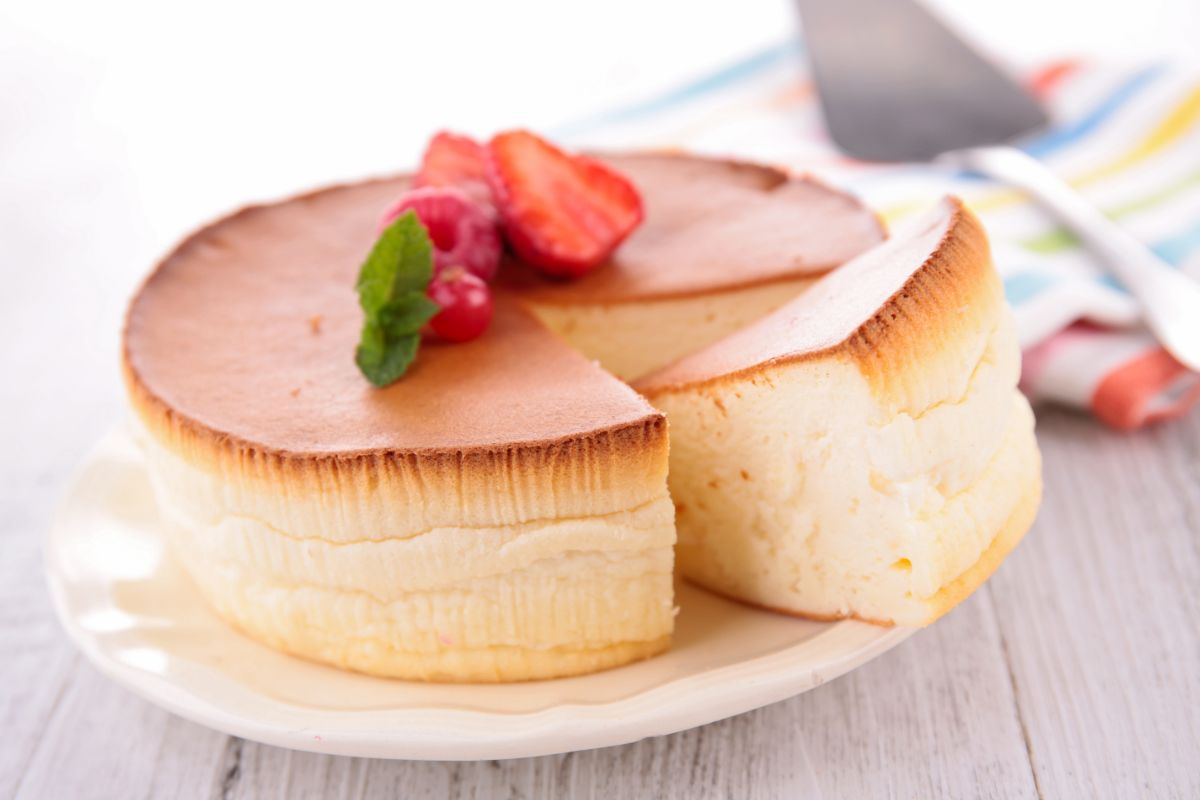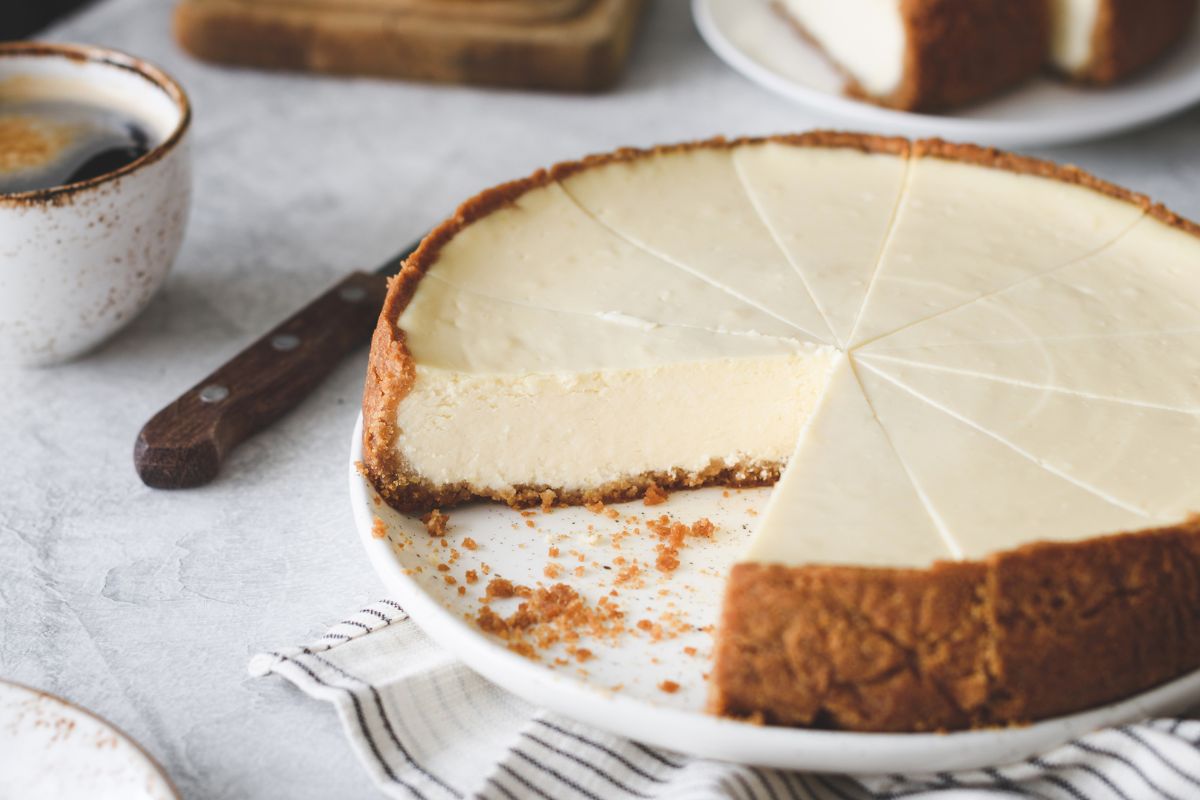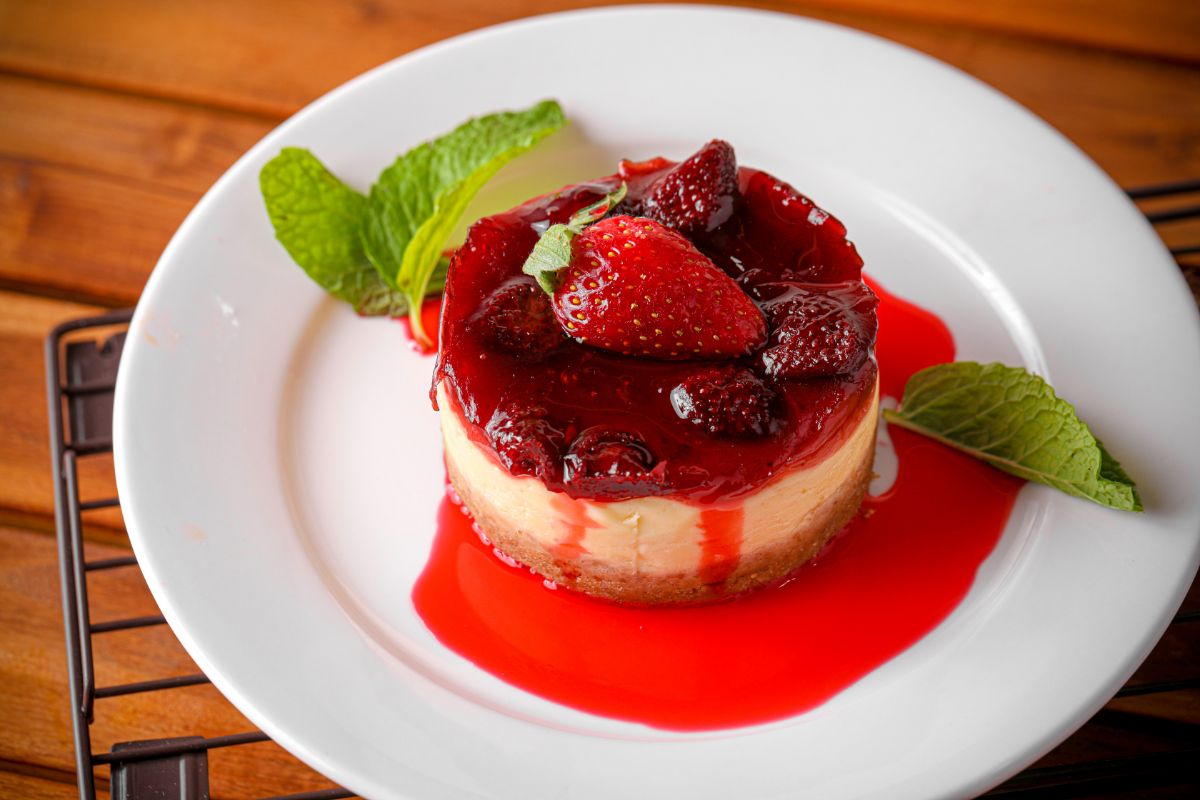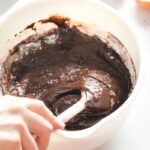One of the most popular desserts in the country is cheesecake, but it can go wrong from time to time.

A single mistake could lead to a huge crack that spoils the appearance. However, it’s simple to avoid cracks in your preferred cheesecake recipe.
Continue reading to understand why your cheesecake is cracking as well as how to make ruined cheesecake a thing of the past.
What Causes Cracks In Your Cheesecake?
Knowing what causes cheesecake defects is helpful before you can prevent them. Cheesecakes typically crack for one of two reasons.
The first is that they are dry and overbaked. Dry cakes simply lack the moisture necessary for them to stay together in one piece.
It’s crucial to watch that you don’t overbake your cheesecake. As the cakes cool, split tops are another possibility. The cake shrinks as it cools.
As the cake cools and shrinks, any portion that is clinging to the pan’s side may pull and split.
How To Prevent Cracks In Your Cheesecake?
There is no one method that will prevent your cheesecake from cracking. Instead, we suggest a few strategies that increase the likelihood of success.
Don’t Overbeat The Eggs
Eggs should only be added in the final step, and they should only be mixed briefly until just combined.
More air is added to the cheesecake mixture as you continue to combine the eggs.
The likelihood that your cheesecake will expand, shrink, and eventually break increases with the amount of air in your batter.
Use A Water Bath
Even if the recipe doesn’t call for it, using a water bath is a fantastic strategy to prevent cake cracking.
If you employ this technique, you’ll be able to produce stunning cheesecakes each and every time.
All you need for a water bath is a high-sided pan and hot water. Place your cake pan within the water bath, then pour boiling water inside. Next, bake as usual.
The water bath aids in more even baking and creates a moist environment that prevents the cake from drying out and breaking.
Grease The Pan
Even if your pan is nonstick, grease it anyway to avoid cracking. As they chill and contract, cheesecakes frequently crack.
If any cake clings to the edge, the cake’s edge may pull inward as it contracts, leaving a gash. Cooking spray used lightly should work to prevent this.
Don’t Place It On The Top Shelf Of Your Oven
Additionally, a cake’s top that bakes too quickly may develop cracks. Moving the cheesecake down a touch in the oven will help keep the top from being overly browned.
Yes, the middle rack works best for baking most of the time, but you need to give the cheesecake some room.
Your rack doesn’t have to be moved all the way to the bottom, but even a single rung can make a big difference.
Don’t Overbake

As with a regular cake, it might be tempting to bake a cheesecake until the center is set.
However, once the center is set, the cheesecake has actually been overbaked, and overbaked cheesecakes are more likely to crack.
You can perform a quick wobble test to determine when your cake has finished baking. Use a wooden spoon to tap the side of your springform pan to do this.
The cake will ripple if it is not quite done. It is finished baking if it gently wobbles and moves as a whole.
Run A Knife Around It
Run a dull knife around the pan’s edge after you take the cake out of the oven and have given it 10 minutes to cool.
By doing this, you can be sure that nothing will stick to the inside rim and cause the cake to split.
How To Fix A Crack In Your Cheesecake?
The great thing about cheesecake is that even if it cracks, it will still taste amazing! But for perfectionists among us, you might want to try and fix the crack.
The technique you use to fix a cracked cheesecake depends on the size and depth of the crack. Here’s how you do it.
Small Cracks
If your cheesecake only has a few minor surface cracks, you might be able to fix them and practically make them disappear.
After the cheesecake has completely cooled, put a small offset spatula in a cup of boiling water.
Once the spatula’s blade is heated, carefully run it over the cheesecake’s divots to melt and recombine the cheesecake.
Your cheesecake’s surface will be free of cracks and smooth once more.
Medium Cracks
If the center of your cheesecake has a few medium-sized cracks, think about adding a topping to it.
On your cheesecake, fruit toppings or even chocolate ganache will hide the cracks and make it extra tasty.
Add a buttercream or whipped cream border around the entire cake to cover the cracks and add decoration if your cheesecake just has a few medium-sized cracks towards the edge.
Deep Cracks
If your cheesecake has some major cracks, you can attempt to gently press the cake together and squeeze the sides to reassemble the dessert.
You could also consider simply slicing the cake into pieces and serving them. To make it appear purposeful, arrange the pre-cut slices individually on plates.
Everyone will just see the gorgeous pieces that are already plated for them, never realizing that your cheesecake had a large break in it.
Final Word
A cracked cheesecake does not necessarily mean that the dessert is ruined.
A cracked cheesecake will still taste very nice even if the texture is a touch drier than usual or the presentation isn’t exactly what you had in mind.
There are plenty of things you can do to prevent your cheesecake from cracking again, so give them a try and watch your baking skills improve!
- How To Reheat A Cheesesteak - November 5, 2023
- What Are Three Must Have Kitchen Knives? - September 22, 2023
- How To Protect Edges Of Pie Crust - June 15, 2023








